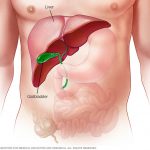Symptoms

On its most basic level, the LD symptoms are quite similar to those of a mild or moderate flu. Symptoms can develop between two to 10 days following exposure. Some patients get what is called Pontiac fever, a very mild case of LD that just causes a fever, chills, headache, and muscle ache. Once the Legionella infection travels to the lungs, full blown LD can develop. People will feel like they are sore and have achy muscles, and their stomach may feel somewhat upset. Those who develop a fever will get chills, and the LD will also cause coughing which may contain mucus or blood. Some patients experience difficulty breathing, chest pain, and shortness of breath.
At first glance, it is almost impossible to tell if a patient has LD or some other respiratory condition. A doctor may only test you for LD if you mention that you think you might have been exposed to the Legionella bacteria. Therefore, you should take the time to let your doctor know if you live in a big building with industrial air condition, hot tub, fountain, and other water systems that put you at risk for LD.
If left untreated, LD can progress further and result in potentially fatal complications. If the lungs are very damaged, a person can suffer from respiratory failure. This results in a lack of oxygen and an excess of carbon dioxide that makes it impossible to breathe. Severe infections can also cause acute kidney failure or septic shock to set in.
More from Things Health
-
Understanding Crohn's Disease
Crohn's Disease is an Inflammatory Bowel Disease commonly referred to as IBD. Inflammatory Bowel Disease consists of several disorders, the primary two are Crohn's Disease…
-
13 Tips to Having a Great Run
Even if you’ve been running for years, you’ll still have days where your pace is off, your speed is much slower than your personal best,…
-
6 Things to Know About a Low FODMAP Diet
If you or someone you know suffers from Irritable Bowel Syndrome (IBS), you are likely familiar with the digestion problems that come with it including…
-
Fatty Liver Disease
Non-alcoholic fatty liver disease is among the most typical causes of chronic liver disease. Studies suggest that though simple fatty liver is a condition benign,…
-
Celiac Disease Diet: 9 Gluten-Free Grains to Try
In recent years, everything from bagels to haircuts have been advertised as being “gluten free.” When the trend first started, many joked about the fact…

















